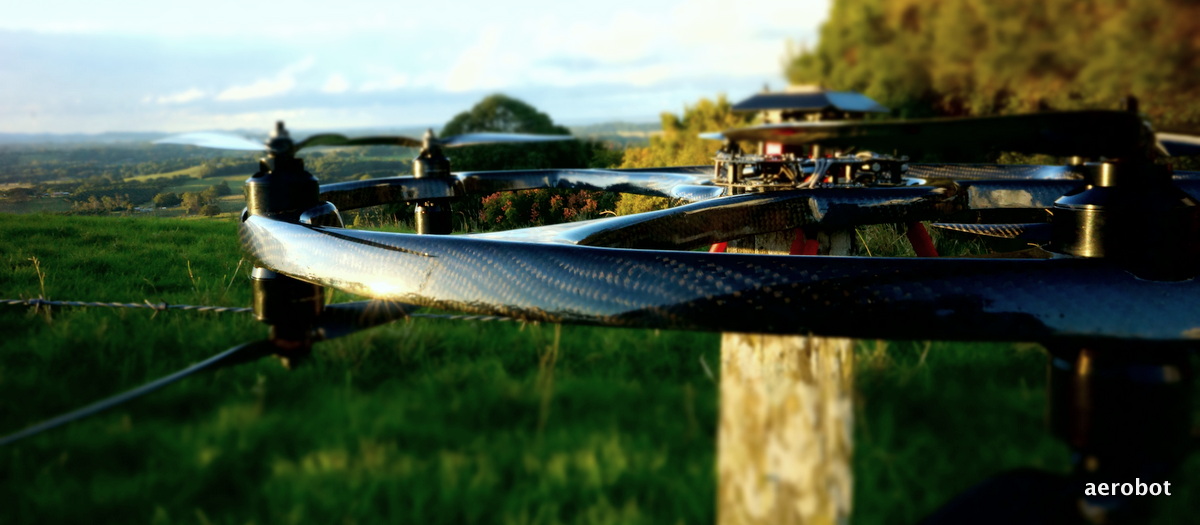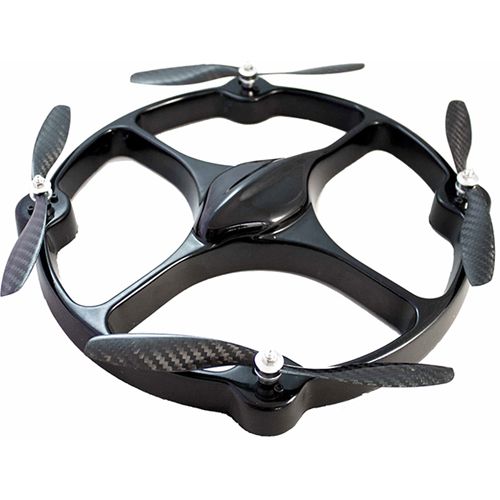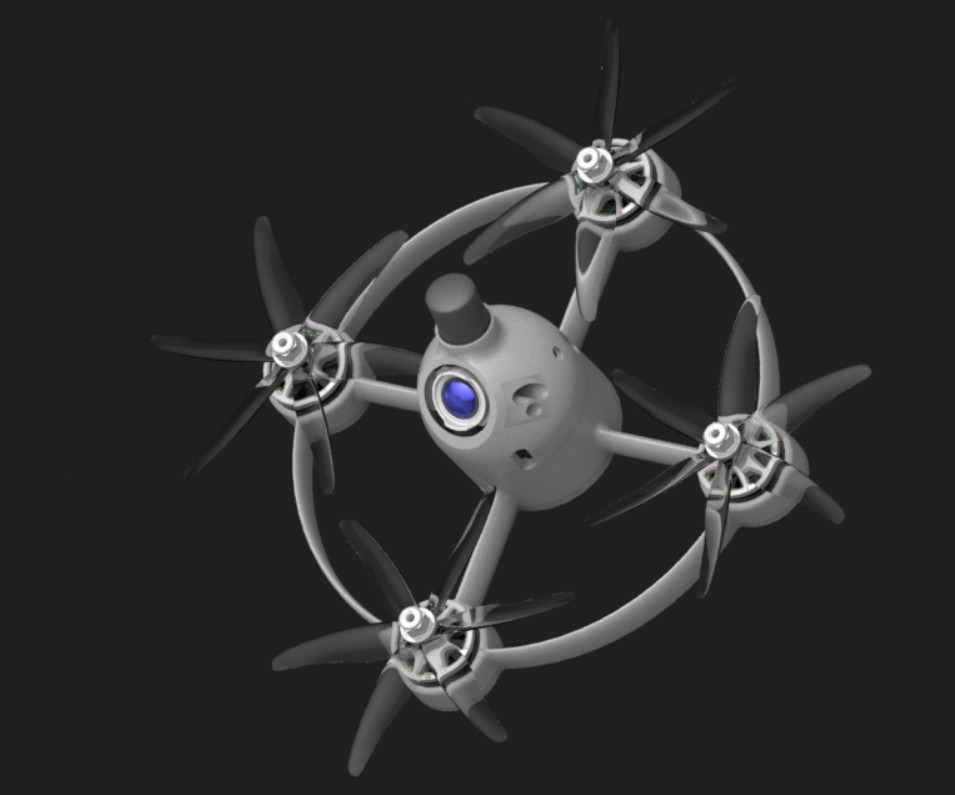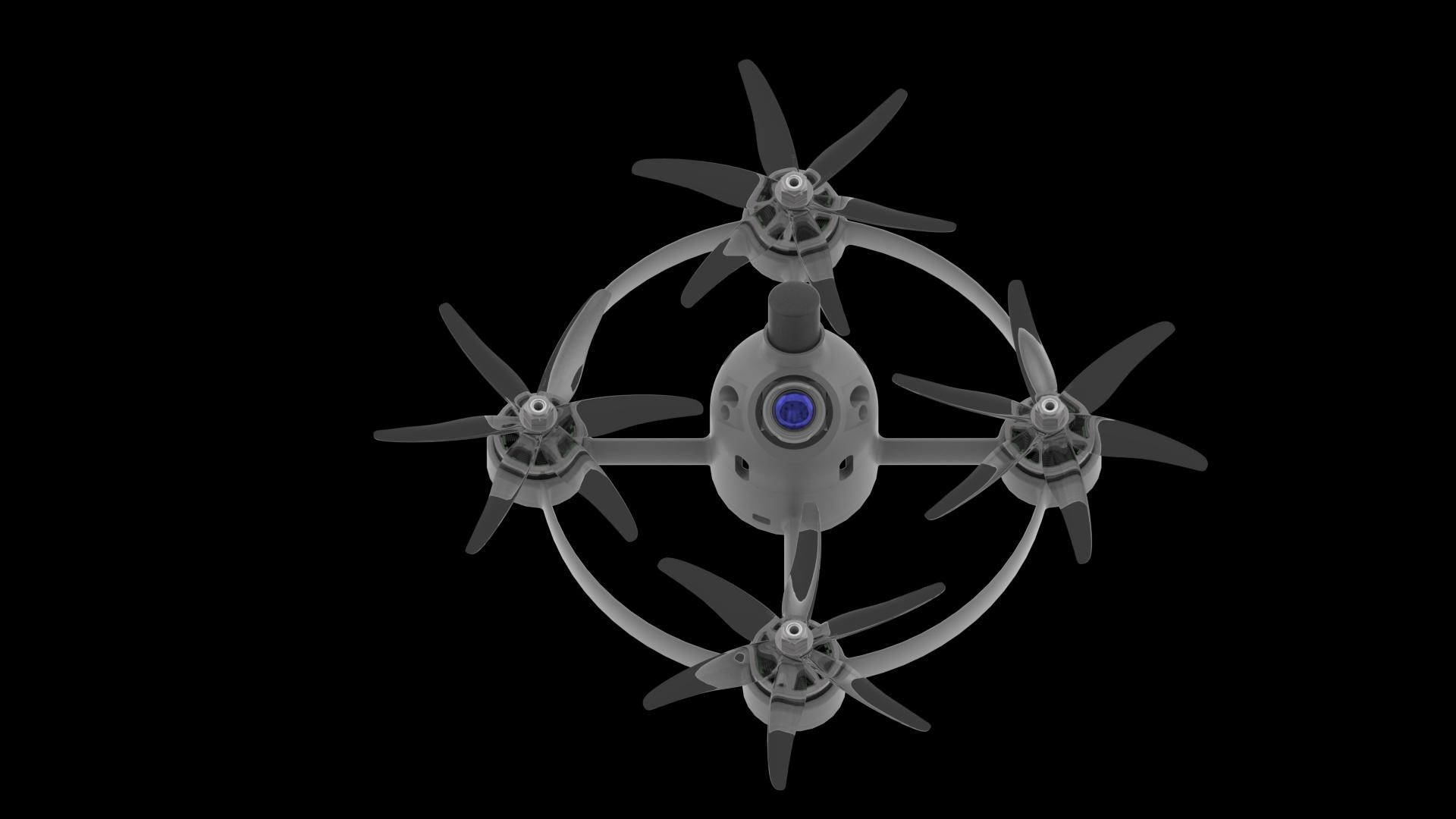Your cart is currently empty!
The journey of the ring design began back in 2010 on a rainy day, when inspiration struck, and I decided to experiment with a new drone concept. Armed with just $10, I picked up a hula hoop from the local shop and started building. The ring boom, with a diameter of 25mm, turned out to be a perfect match for some old motor mounts I had lying around from Droidworks. I mounted six motors onto the ring and added a 25mm tube running from front to back to hold the flight controller. The battery hung underneath, creating a simple yet revolutionary design.
To my surprise, the drone flew better than some of the most expensive options available at the time, including the $20,000 models from Droidworks and FreeFly. Standard PID tuning on the MikroKopter system was all it took to make this makeshift hula-hoop drone soar. It was hard to believe that something so basic could outperform the cutting-edge machines of the day.

Encouraged by the results, I took the next step: designing a custom 10-inch propeller quadcopter frame using foam and fiberglass molds. This was a PLUS configuration frame (more on that later), and back then, the only option was to sell fully built, ready-to-fly drones. At the time, no one else was building or flying drones like these—it was before the era of DJI Phantoms. While these early machines were expensive and only a few were sold, they laid the foundation for a concept that would endure.

We pushed the ring design to its limits with some extreme tests. I remember running over a ready-to-fly frame with my girlfriend’s Subaru and watching it survive. Here is the video uploaded 12 years ago Crash Testing
We also slammed drones into trees at full speed, only to find that damage was minimal. The ring design proved to be incredibly strong—after all, the ring is one of the most durable shapes in nature.
Another unexpected discovery came from analyzing the black box logs: vibration levels were remarkably low. This was likely because, unlike traditional designs with single booms holding individual motors, all the motors were mounted directly onto the ring itself. The uniform structure eliminated the flex and resonance typically introduced by separate booms, resulting in a smoother, more stable flight. Whatever the reason, it was clear the ring design offered unique and tangible advantages.

The Latest Evolution: A New Era for the Aeroring
The newest iteration of the Aeroring design represents the culmination of over a decade of innovation. Leveraging advancements in technology, this drone is smaller, lighter, and more powerful than ever before. Thanks to the affordability and accessibility of modern 3D printing—like the Bambu Lab printers—producing highly precise and durable parts is now within reach for almost anyone. This has opened up a world of possibilities for creators, builders, and enthusiasts alike.
Today’s drone ecosystem also benefits from the vast array of components available. Back in the early 2010s, I was limited to using 10-inch props simply because they were the only ones available with both CW and CCW rotation. Now, the market offers an incredible variety of motors, ESCs, flight controllers, and propellers, making it easier than ever to fine-tune and customize designs.
The latest Aeroring design takes full advantage of these advancements. Using compact, high-performance motors, the drone achieves impressive power-to-weight ratios. The flight controller and ESCs are more advanced and efficient. The 3D-printed components allow for intricate designs that enhance both aerodynamics and durability, while still keeping production costs low.
What makes this the perfect time to revisit and refine the Aeroring concept is the accessibility of tools and resources. With so many people owning drones and 3D printers today, the ability to build and experiment is no longer exclusive to large manufacturers or professionals. This democratization of technology means anyone can take inspiration from these designs and make their own.
The latest Aeroring design is built around the DJI O4 system, offering fully encrypted HD video transmission with a range of over 20 kilometers. This system ensures secure, crystal-clear visuals and unlocks the full potential of modern drone technology. Paired with the Aeroring’s refined frame and performance, it’s a seamless combination of reliability and innovation.

Why the Ring is the Smartest Form for Drones
The ring frame design is more than just innovative—it’s practical, durable, and built for performance. Unlike traditional X or Plus frames, the Aeroring leverages the natural strengths of a circular structure to redefine what drone frames can achieve. Here’s why the ring is the future:
1. Superior Impact Resistance
The circular shape of a ring is inherently strong because it distributes impact forces evenly across its structure. Unlike traditional frames with exposed booms that act as weak points, the Aeroring absorbs and spreads pressure to minimize damage. This makes it exceptionally durable, even in extreme tests.
2. Reduced Vibrations
Vibrations can cause instability and ruin camera footage, but the Aeroring solves this problem naturally. The continuous geometry of the ring resists torsional vibrations, providing a smoother and more stable flying experience. Without extended arms amplifying oscillations, the Aeroring keeps your motors and flight controller in an optimal environment for precision control. Harmonics should be minimal and on one Axis.
3. Improved Aerodynamics
The Aeroring’s circular design is inherently aerodynamic, reducing drag and improving efficiency during flight. Unlike traditional X or Plus frames with exposed edges and arms disrupting airflow, the ring moves cleanly and quietly through the air. This results in longer flight times, better power efficiency, and smoother forward motion.
4. Lightweight Yet Strong
The ring frame delivers an exceptional strength-to-weight ratio. By integrating the motors into a single, unified structure, the Aeroring eliminates the need for bulky components, creating a frame that is both lightweight and robust. This means more power for performance and payload, without compromising on durability.
5. Balanced and Stable Flight
The symmetrical design of the ring ensures even weight distribution and balanced thrust. This not only simplifies flight control but also improves handling during dynamic maneuvers. Unlike X frames, which can experience uneven stress and require separate PID tuning for pitch and roll, the Aeroring maintains consistency in all directions.
Why the Ring Design Matters Today
With advancements in 3D printing, high-efficiency motors, and battery technology, the Aeroring is more relevant than ever. It’s designed for creators, builders, and pilots who demand performance and reliability. Whether you’re flying for endurance, speed, or creativity, the Aeroring combines the durability of its circular structure with cutting-edge drone components to create a truly revolutionary frame.
The Aeroring isn’t just the strongest form for drones—it’s the smartest.
